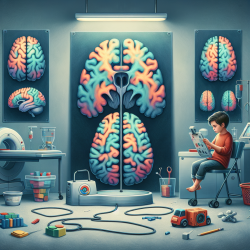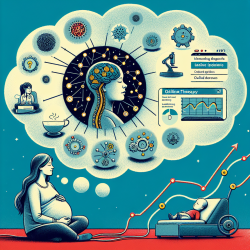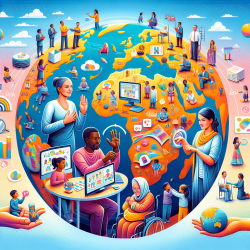Introduction
Mobile healthcare (mHealth) is revolutionizing the way healthcare services are delivered, offering significant potential to improve health outcomes for individuals with disabilities. However, as highlighted in the research article "Mobile Healthcare and People with Disabilities: Current State and Future Needs," people with disabilities are often underrepresented in the development and adoption of mHealth applications. This blog aims to provide practitioners with insights into leveraging mHealth to enhance therapeutic outcomes and encourage further research in this domain.
The Current Landscape of mHealth for Disabilities
The study conducted by Jones, Morris, and Deruyter reveals that while mHealth is growing rapidly, its benefits are not equally distributed. Despite the high ownership of smartphones among people with disabilities, the adoption rate of health-related apps is significantly lower compared to their non-disabled counterparts. This disparity highlights a crucial gap in the accessibility and usability of mHealth solutions for disabled individuals.
Key Findings and Implications for Practitioners
The research identifies several barriers that hinder the effective use of mHealth apps by people with disabilities, including:
- Accessibility Issues: Many mHealth apps are not designed with accessibility in mind, making them difficult to use for individuals with visual, dexterity, or cognitive impairments.
- Lack of Targeted Solutions: There is a scarcity of apps specifically designed to address the unique health needs of people with disabilities, such as managing chronic conditions or facilitating communication with healthcare providers.
- Usability Challenges: The complexity of app interfaces can pose significant challenges, particularly for users with cognitive impairments or limited technical skills.
For practitioners, these findings underscore the importance of advocating for and utilizing mHealth solutions that are inclusive and tailored to the needs of individuals with disabilities. Practitioners should seek out apps that prioritize accessibility and involve disabled users in the design and testing phases to ensure usability.
Encouraging Further Research and Development
The research article emphasizes the need for continued research and development in the field of mHealth for disabilities. Practitioners can play a pivotal role by:
- Participating in Research: Engaging in studies that explore the effectiveness of mHealth interventions for people with disabilities can provide valuable data to guide future app development.
- Collaborating with Developers: Working alongside app developers to ensure that new mHealth solutions are designed with accessibility and usability at the forefront.
- Advocating for Inclusive Policies: Supporting policies that promote the development and adoption of accessible mHealth technologies can help bridge the gap in healthcare disparities.
Conclusion
The integration of mHealth into therapeutic practices offers a promising avenue for improving healthcare outcomes for individuals with disabilities. By embracing data-driven approaches and advocating for inclusive mHealth solutions, practitioners can contribute to reducing health disparities and enhancing the quality of life for their clients.
To read the original research paper, please follow this link: Mobile Healthcare and People with Disabilities: Current State and Future Needs.










